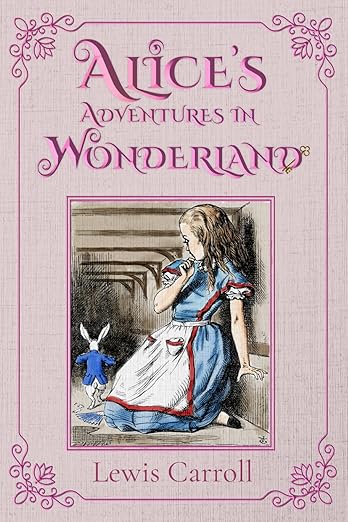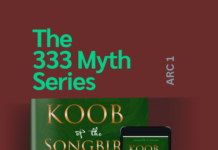Banned books remind us that stories hold power. They question rules, stir ideas, and keep the fight for free expression alive through the pages and words.

Books get banned for all kinds of reasons. Some challenge the beliefs of a culture, others use raw or explicit language, and a few are seen as too bold or disruptive. But once a book is banned, it gains an irresistible pull. People want to know what made it so controversial. That curiosity often turns the ban into the best kind of promotion. The stories that shock or provoke are usually the ones that stay with us the longest.
Here’s a look at some books that faced bans across time and countries – and still managed to keep readers hooked.
1. Alice’s Adventures in Wonderland (1865) by Lewis Carroll
Lewis Carroll’s Alice’s Adventures in Wonderland has long been adored for its playful absurdity, clever wordplay, and dreamlike imagination. It is hard to imagine such a whimsical tale facing bans, yet it has stirred controversy for more than a century. In 1900, a U.S. school banned it for allegedly containing inappropriate language and references, claiming it disrespected authority figures. Years later, in China’s Hunan province, it was outlawed for letting animals speak like humans, a notion the governor feared could disrupt social order. By the 1960s, the story faced fresh criticism in America, as some linked it to the growing drug culture. Despite all that, Alice in Wonderland remains a beloved classic. It i a curious world with eccentric characters and sharp wit that continue to inspire readers of all ages while subtly poking fun at the logic, politics, and order of the real world.
2. Tropic of Cancer (1934) by Henry Miller
Henry Miller’s Tropic of Cancer is almost impossible to leave off any list of banned books. First published in France in 1934, it faced countless bans and over a hundred obscenity cases across the U.S. and beyond. The book is Miller’s raw and unapologetic account of his life in Paris. It was filled with graphic sexual encounters, wild philosophizing, and a rebellious celebration of existence. At the time, its openness about sex, along with its harsh tones of misogyny and racism, made it deeply controversial. Yet, that same controversy fueled curiosity. Readers secretly smuggled copies, eager to see what was so forbidden. The outrage turned Miller into a literary rebel and influenced generations of writers, especially the Beat movement. Today, Tropic of Cancer stands as a daring and influential piece of literature, still debated, still bold. Moreover, it is still carrying that same unfiltered energy that once shocked the world.
3. Nineteen Eighty-four (1949) by George Orwell
George Orwell’s Nineteen Eighty-Four remains one of the most powerful and polarizing novels ever written. After the success of Animal Farm in 1945, which openly criticized Stalin’s betrayal of the Bolshevik Revolution, Orwell pushed boundaries even further with Nineteen Eighty-Four in 1949. The book’s chilling portrayal of a world controlled by constant surveillance and government manipulation was seen as a direct attack on Stalin’s regime. Unsurprisingly, it was banned in the Soviet Union until 1988.
The novel follows Winston Smith, an ordinary man trying to find truth and freedom in a dystopian society ruled by “Big Brother.” Its themes of censorship, nationalism, and the loss of privacy struck a nerve worldwide. In the U.S., the book also faced backlash. Ironically, it was from both ends of the political spectrum. Some labeled it pro-communist, while others said it was anti-government. Decades later, Orwell’s words still resonate. Nineteen Eighty-Four stands as a timeless warning against blind authority and a reminder of how fragile freedom can be.
4. The Naked Lunch (1959) by William Burroughs
William Burroughs’ Naked Lunch is one of those books that shocked the world and changed it at the same time. Published first in Paris in 1959, the book faced a long battle before it could even reach American readers. Its raw depictions of drug use, sexual chaos, and grotesque imagery made it a target for censorship everywhere. When it finally hit the U.S. in 1962, it stirred one of the last major obscenity trials in American literature, and most notably in Boston in 1966. The book’s fragmented and hallucinatory style confused critics but fascinated the Beat Generation. With support from Allen Ginsberg and Jack Kerouac, Burroughs defended his work as more than shock value. It was social commentary wrapped in surreal storytelling. Today, Naked Lunch stands as a bold and fearless critique of addiction and the human condition. It is messy, chaotic, disturbing, but brilliant in ways only Burroughs could deliver.
5. Lolita (1955) by Vladimir Nabokov
Vladimir Nabokov’s Lolita remains one of the most debated books in literary history, a masterpiece and a moral minefield all at once. Before its publication in 1955, even Nabokov hesitated, unsure if the world was ready for such a story. It was his wife who convinced him to publish it, and a small pornographic press in France took the risk. What followed was global controversy and instant fame. Told as the confession of Humbert Humbert, a European scholar obsessed with a 12-year-old girl named Dolores, Lolita walks the thin line between art and obscenity. It was banned in France, England, Argentina, New Zealand, and South Africa soon after release, and labeled “highbrow pornography” by critics. Yet, its lyrical prose and psychological depth made it impossible to ignore. Beyond the scandal, Nabokov’s Lolita explores obsession, guilt, and manipulation with haunting precision. It remains a book that challenges, disturbs, and fascinates readers, a proof that art can provoke without apology.
6. Ulysses (1922) by James Joyce
James Joyce’s Ulysses has long walked the tightrope between brilliance and obscenity. First serialized between 1918 and 1920, the novel follows a single day in the lives of Stephen Dedalus, Leopold Bloom, and Bloom’s wife, Molly, weaving a masterpiece of modernist storytelling through stream-of-consciousness prose. While writers like T.S. Eliot, Ernest Hemingway, and Ezra Pound hailed it as groundbreaking, many moral watchdogs saw it as scandalous. An early excerpt describing self-pleasure led to the book’s ban in the United States, with the New York Society for the Suppression of Vice pushing hard to keep it out of readers’ hands. It took the 1933 court case United States v. One Book Called “Ulysses” to finally overturn the ban. The United Kingdom and Australia followed similar paths, suppressing the book for decades. Despite the outrage, Ulysses is now celebrated as a literary triumph. Its daring structure, emotional complexity, and deep exploration of everyday human life continue to redefine what literature can be, and what it dares to say.
7. The Absolutely True Diary of a Part-Time Indian (2007) by Sherman Alexie
Sherman Alexie’s The Absolutely True Diary of a Part-Time Indian made a huge impact when it came out in 2007. It even won the National Book Award for Young People’s Literature that same year. The story follows Junior, a Native American teen who leaves his reservation school to attend an all-white high school. Told through diary entries, cartoons, and different fonts, the book brings readers deep into Junior’s world with raw honesty and humor. Alexie pulled from his own life to make the story real and relatable. Critics praised it for capturing both pain and laughter in a way that felt fresh and true. But over time, the book became one of the most challenged titles in schools. People objected to its language, sexual references, and themes around racism. Things grew more complicated after accusations of sexual misconduct against Alexie surfaced years later. Despite the controversies, the novel still stands as a powerful look at life, identity, survival, and growing up between two worlds.
8. The Satanic Verses (1988) by Salman Rushdie
Few books have sparked as much anger and danger as Salman Rushdie’s The Satanic Verses. The novel follows two men rooted in Islamic culture as they struggle to make sense of their identities in the face of Western influence. But what made it explode into global controversy was its portrayal of a character resembling the Prophet Muhammad and its interpretation of the Qurʾān. Many in the Muslim community saw this as deeply blasphemous. In 1989, Iran’s Ayatollah Khomeini issued a fatwa calling for Rushdie’s death. That single act turned a book release into a worldwide storm. Rushdie was forced into hiding, constantly moving under guard for years. His life became a story of survival as much as rebellion. The book was banned across countries like Pakistan, Iran, Egypt, and South Africa. Even India, Rushdie’s birthplace, blocked it from import in 1988. In 2024, when official records could not be produced in court, the ban was only overturned decades later. The Satanic Verses remains one of the boldest examples of how art can challenge power, and the heavy price that can come with it.
9. The Bluest Eye (1970) by Toni Morrison
Toni Morrison’s first novel, The Bluest Eye, is one of those books that stays with you long after you have closed it. Set in Lorain, Ohio, where Morrison herself grew up, the story follows Pecola Breedlove. She is a young Black girl who believes beauty and acceptance come from looking white. She dreams of having blue eyes, thinking that would make the world love her back. It is a heartbreaking story, but also a brutally honest one about how racism and self-hate can shape lives. When it first came out in 1970, the book did not get much attention. But over time, it became a cornerstone of American literature, a powerful voice for the Black experience after the Great Depression. Morrison’s storytelling style is layered and raw, weaving together history, culture, religion, and memory in a way that feels both poetic and painfully real. Yet, The Bluest Eye has faced constant attempts to be banned for its themes of racism, abuse, and trauma. Schools and libraries have tried to pull it from shelves, claiming it is too disturbing. But as the NAACP once said, silencing stories like this only deepens ignorance. Morrison did not write to comfort people; she wrote to make them see.
Banned books remind us that stories have power. They challenge comfort and question systems that lead to the spark of a thought. Each ban reveals fear, but every reader who seeks the truth keeps freedom alive, one page at a time.










